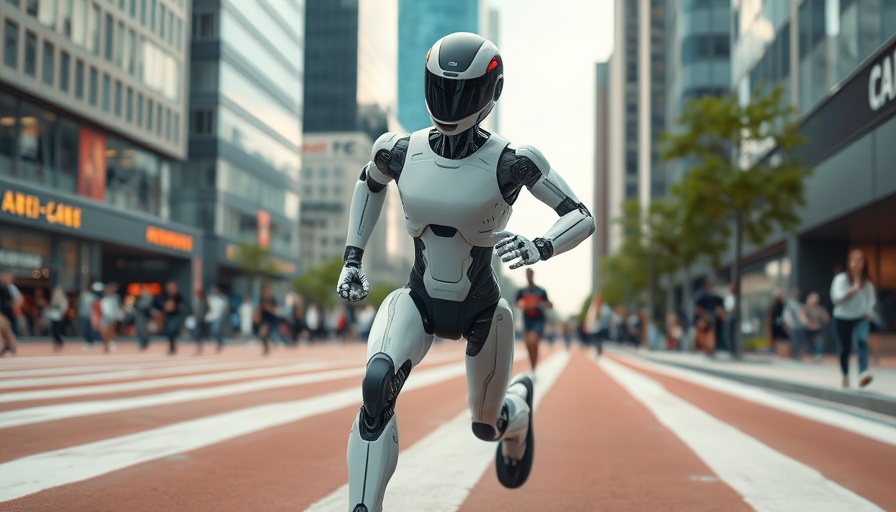
The Rise of Humanoid Robotics: A Slow Run to Success
In a remarkable display of innovation and aspiration, robots took part in the world's first humanoid half-marathon held at Beijing's E-Town tech hub. This event was more than just a race; it symbolized the significant strides being made in robotics and artificial intelligence. However, for all the excitement, the robots' performance highlighted just how far they have to go before they can compete with human endurance athletes.
What Happened at the Half-Marathon?
On that eventful Saturday, 21 humanoid robots competed alongside thousands of human runners. Leading the pack was the Tiangong Ultra, developed by the state-supported X-Humanoid institute. It finished the race in a seemingly slow time of 2 hours and 40 minutes. For perspective, the winning male human runner completed the half-marathon in a blistering 1 hour and 2 minutes.
Despite its winning status, Tiangong Ultra’s performance required human assistance, as an operator ran ahead with a signaling device, allowing the robot to imitate his movements. Most other robots in the race were remotely controlled, emphasizing the need for human intervention in effectively orchestrating the complex action of running. The reality was evident: while these robots could take steps, they still relied heavily on humans to guide and control their movements.
A Closer Look at Robot Performance
Despite the spectacle, not all robots had successful runs. Only four managed to finish within the designated four-hour cutoff, with most requiring over three hours, and some failing to complete the race altogether. One unfortunate robot, named Shennong, met a tragic end by tripping a human companion and crashing into a fence. Another small competitor, measuring just 30 inches tall, emitted smoke from its head during the race, showcasing the mechanical struggles that come along with these high-stakes technological displays.
Why This Matters in Today’s Tech Scene
This event is a poignant reminder of both the progress and challenges in robotics. The engineering employed in designing these humanoids is impressive, but the marathon results show the limitations we currently face. As we explore new technology, the lessons learned from these experiences can drive the development of robots that are not only capable of completing a race but also integrating more seamlessly into daily tasks.
Global Implications and Innovation Trends
The significance of this race extends beyond the local event, making waves in global tech news. As countries like China invest heavily in robotics—the Tiangong Ultra and its peers demonstrate the potential for humanoid robots to evolve. However, the performance also highlights the ongoing need for research and innovation, challenging developers worldwide to address the barriers that limit robot agility and efficiency.
The Future of Robotics: Insights and Predictions
What does the future hold? As exciting as this half-marathon may seem, many experts predict that it will take years, if not decades, for humanoid robots to reach their potential. With ongoing advances in artificial intelligence, machine learning, and robotic engineering, new developments may pave the way for performance enhancements that could allow them to compete more effectively against human capabilities in various contexts—including sports.
This race serves as a rallying focal point, significantly showcasing the incredible pace of technological advancement while also prompting a discussion about the balance between ambition and practical limitations.
A Call to Engage with Robotics
The incredible world of robotics continues to evolve rapidly. As industries across the globe push toward innovation, understanding these developments can significantly impact our daily lives. As such, staying informed about the latest tech news is essential for embracing the future technology brings. For those interested in the latest advancements in robotics and artificial intelligence, following emerging tech trends will be crucial to appreciate how close or far we might be from achieving remarkable feats, akin to a humanoid completing a marathon at human-like speeds.
 Add Row
Add Row  Add
Add 



Write A Comment